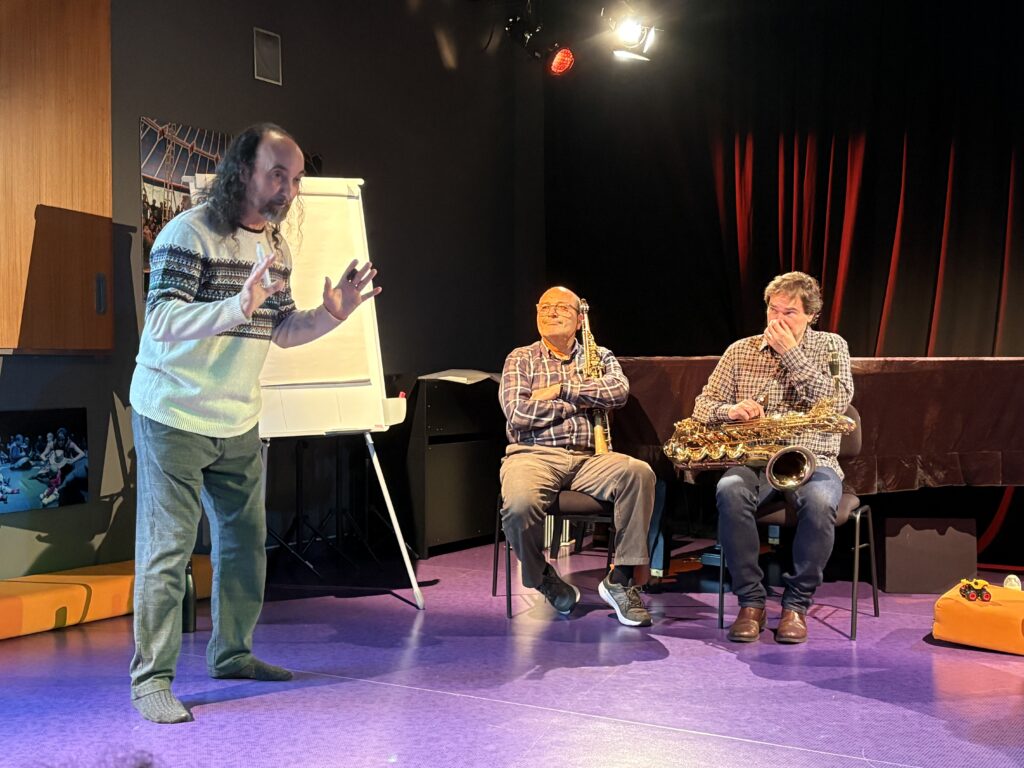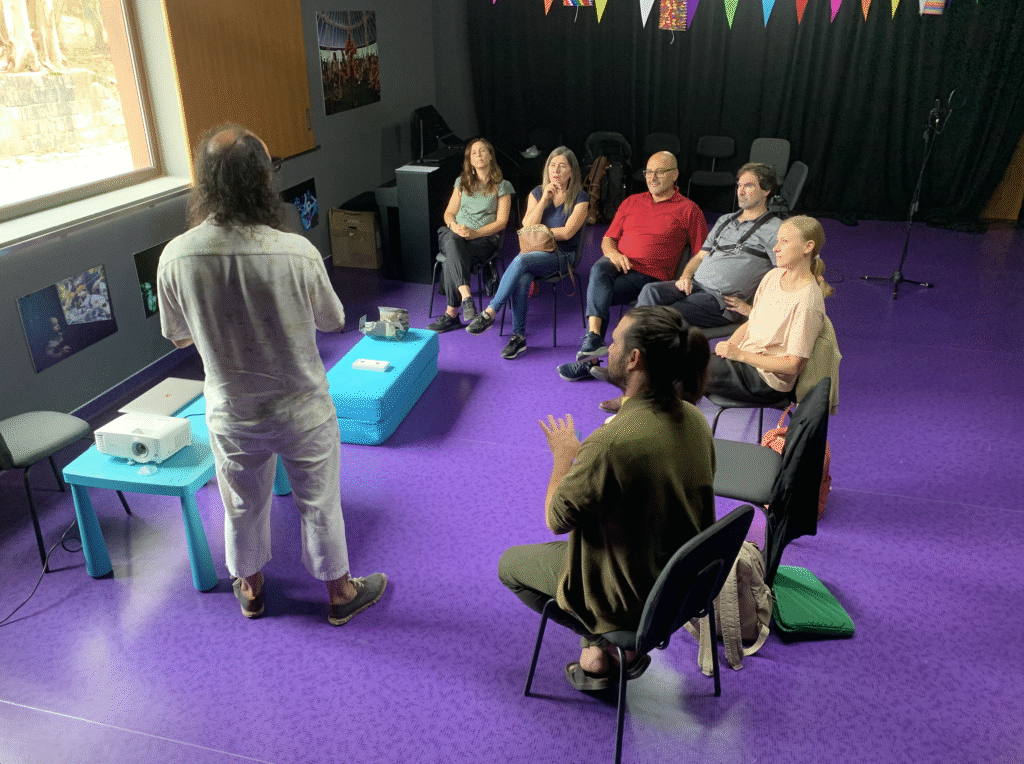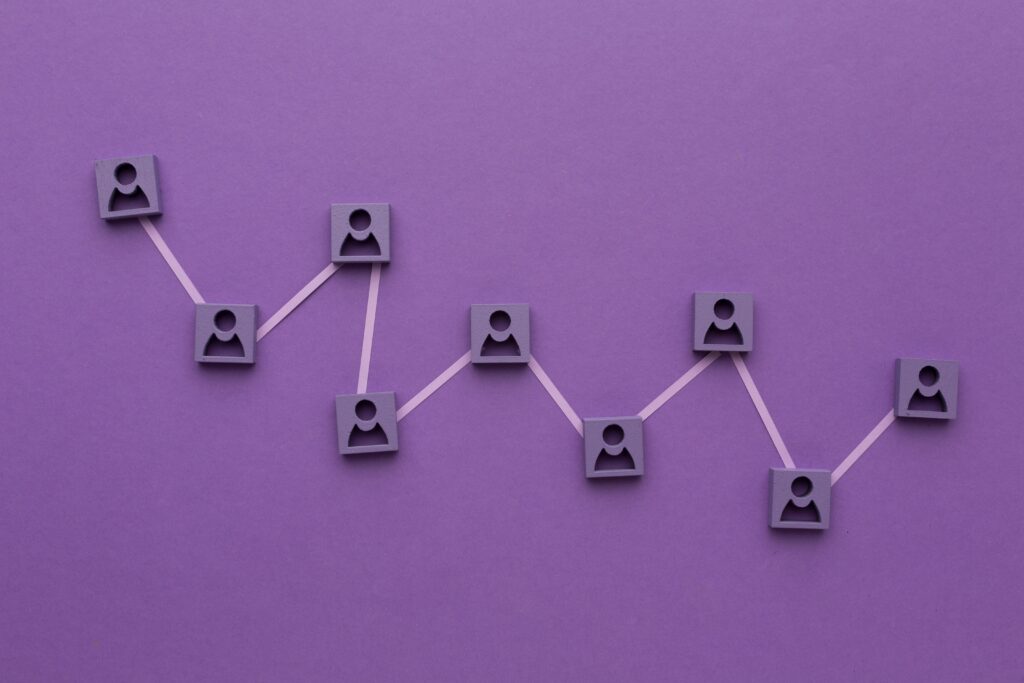Bridging Art, Technology and Community: Insights from AMPLIFY’S Leiria Gathering
By Isabel Lucena | June 2025
When digital innovation is reshaping every facet of our lives, the arts are no exception. The AMPLIFY gathering in Leiria (Portugal) is an opportunity to examine two pivotal questions:
- How can arts organisations and technologists work together in practical terms?
- How can a sales-dependent company like CPL involve its audience in meeting the digital challenge?

Harmonising Artistic Vision and Technological Innovation
A recent gathering in Portugal marked the first in-person gathering of AMPLIFY members since the project’s launch in November 2024. On that occasion, each of the four pilots presented research questions on how digital technology can enhance their existing practices, while the technological partners showcased what tools they had to offer as a departing point. In the months leading to the Leiria encounter, work was done to address the diverse needs posed by the initial stage of project development. So, although the Leiria event focused only on the Portuguese pilot, the prospect of combining the various dimensions of AMPLIFY in the real world was met with enthusiasm by all involved.
The gathering
In late March 2025, artists, technologists, and researchers from various parts of Europe travelled to Leiria, in central Portugal. Their goal: to spend five days of intensive work laying the foundations for the Music with Babies pilot. During the stay, while enjoying Leiria’s local culture, the group had opportunities to strengthen the vital human bonds formed at the kick-off meeting. But most of their time was spent in the periurban parish of Pousos, on the edge of Leiria, where the group was immersed in work at the base of Cooperativa Paulo Lameiro (CPL), a former shoe factory creatively repurposed into a rehearsal, storage, administrative, and artistic residency space by the original owner’s great-nephew, artistic director Paulo Lameiro. These five days of intense collaboration were made possible by extensive preparation in the weeks leading up to the gathering. The technology partners — Vicomtech, CWI, TUS, and Salsa Sound — adapted existing tools to this pilot’s needs, while CPL prepared Concerts for Babies’ artists and audience members to play their part in the event, all in close collaboration with the NTNU team that ensures AMPLIFY’s human-centric and ethical approach. Work began with Pilot 0 — a session to test and showcase the tools in a real-world environment.
Pilot 0
The technologists began work with a day setting up their state-of-the-art equipment at CPL’s rehearsal space, which had been set up as close as possible to a Concert for Babies stage. This configuration made it easier for the technologists to organise their devices effectively and present the tools’ potential uses, while exploring the opportunities and challenges of a real-world environment. The space was equipped with various devices, some familiar, such as cameras and microphones, others more unusual, including sensor technology. Each of the four teams was responsible for specific aspects, but most tools were meant to interact and work complementarily, as they would in a real concert.
The Music for Babies brief to the technologists had two aspects: enabling babies (particularly the youngest ones) to become composers by translating their responses to music into new scores in real-time; and extending participation opportunities to those not present in the concert space (such as grandparents) enabling them to engage through remote technology. This second aspect was less explored in Leiria, but the potential for enabling babies to compose through their responses to the music played to them was addressed by the technologists who developed and brought along a variety of options, including facial recognition technology, devices that responds to movement such as shaking or squeezing, and sensors capable of detecting even more subtle biological signals. Some of these devices were met with greater enthusiasm from the artists than others, as their potential for adoption varied from those that complement existing practices and could be integrated almost instantly, to those that would need substantial adaptation before they could improve on what is already achieved without technology. Overall, Pilot 0 was deemed a success, as the demonstrations, experimentation, and discussions either confirmed the direction taken or highlighted new paths to explore. The session was particularly relevant for the two main groups involved: the artists, who contributed their initial insights, shaping the technology aimed to enhance their practice; and the technologists, who learned how their various components interact in a real-world environment while simultaneously beginning to deepen their understanding of the needs, wishes, and concerns that are part of the equation and must inform all aspects of project development.
Involving the Stakeholders: A Human-Centric Approach
As well as shedding light on how arts organisations and technologists can work together, the Leiria encounter provides insights into a second poignant issue: how a company like CPL, which depends entirely on its audience, can involve this audience in exploring ways forward.
Concerts for Babies began in the late 1990s, gaining a considerable following at home in Portugal while also developing an audience across Europe and beyond. But, despite its roots in classical music, the project has never received institutional support, depending exclusively on box office revenue. So Concerts for Babies is sustainable only through the
passion and commitment of its audience of families with babies and a core group of dedicated musicians.
Moving with the times – whether that means responding to the needs of a fast-changing society or reflecting continuous technological advances – is vital if the project is to remain relevant. AMPLIFY has the potential to develop new approaches, but for these to achieve the levels of success experienced so far, they must be shaped by the needs, wishes and concerns of the audience and artists who have ensured the project’s sustainability all along. This aligns perfectly with the human-centric approach at the core of AMPLIFY, but how is it implemented in real life?
An ethical methodology guides AMPLIFY’s approaches and tools. In this instance, to ensure that the interests of creators and audiences are served, the Leiria encounter scheduled two project co-design sessions — one with artists and the other with families/audiences — as well as additional opportunities for technologists to deepen their understanding of the context. This included experiencing the event that unites the two main groups of stakeholders: an actual Concert for Babies, which offered invaluable insights to all AMPLIFY members who attended on the final day of the encounter.

Co-designing
The co-design session with artists was straightforward. It included a showcase by the technologists of the various ideas they have been working on, and discussions with the artists about the challenges and limitations they encounter with Concerts for Babies, strategies to overcome these, and the potential of digital technology in this context.
The session with the families was far more complex, partly because, naturally enough, babies’ families come with babies. The families of sixteen babies had signed up through a previous call and not all were expected to make it on the day. But they did and even brought an extra participant, making it 17 babies and families (mostly two parents). In the best Concerts for Babies tradition, families were greeted individually, and the session started with a short concert for them. Then it progressed to a workshop format in which the wider group was subdivided into smaller units, each provided with materials and prompts based on themes identified through a questionnaire they had completed when responding to the call.
This wasn’t a typical workshop, but considering that a third of the group were babies, it went surprisingly smoothly. Once divided into small working groups, despite most being strangers to one another, the grown-ups operated as micro-communities within which some elements engaged actively in the discussions and search for solutions, writing down ideas and reassembling props around the stage plan they were provided with, while others cared for the group’s babies in a supportive, communal manner. This collaborative approach soon spread around the room, and the Human-Centric team leading the session was joined
by other AMPLIFY members, so that all family groups were supported with answers and explanations whenever needed. Still, all was done in a friendly manner to avoid anyone feeling overwhelmed or inhibited. The task was easier than expected because most participants spoke English, which allowed the non-Portuguese speakers to take part. The musicians were also engaged throughout, playing to/with babies, and the session concluded with a second musical moment before the participants departed. Whatever their views of technology, all the families were keen to remain part of the pilot. This showed the trust established by CPL and its Concerts for Babies over the years. Nevertheless, it also reflects their satisfaction with the human-centric approach that places them at the heart of the shaping and decision-making processes.
Final reflections
Over the five days of the Leiria gathering, different members of AMPLIFY came and went, as some were unable to participate in the entire event. By the end of the fourth day, having completed Pilot 0 and two very different co-design sessions, those who remained were exhausted but eager for a chance to reflect and exchange ideas. The attentive Portuguese host, Paulo Lameiro, treated the group with a trip to the nearby Atlantic coast to enjoy a magnificent sunset and continue the discussion. At this point, the group did not yet have access to the written material produced during the co-design sessions, but reflection was already leading to some preliminary conclusions, including the following:
- Artists were generally open to new technologies to enhance and complement their work. They would appreciate digital tools capable of translating babies’ emotions into music scores but expressed concerns that some of the graphic scores presented lacked the sensitivity to compete with what they already do unassisted. The alternative of using conventional notation divided opinions regarding its effectiveness for real-time performance with different types of instruments. They welcomed simpler devices, such as one that could rhythmically interact with the light strips attached to their clothing. While viewing screens with scepticism, they noted that other forms of projection would be helpful and viable alternatives. Their main concern was the potential disruption that the presence of technology on stage could cause, emphasising the need for all devices to be as discreet as possible.
- Families were primarily concerned with ensuring the well-being and privacy of their babies. Some specific worries included the use of sensors that may cause discomfort, the presence of screens which they generally like to limit in their children’s lives, and the potential recording and storing of sensitive information. However, some parents were very interested in technology, even challenging their peers by pointing out that we are constantly being filmed by security cameras and recorded by our mobile phones.
As for the Music with Babies trial, Pilot 0 and the co-design sessions were invaluable in bringing process and beneficiaries closer and enabling a truly human-centred exercise; the demonstrations and discussions opened up other possibilities such as the potential to develop an additional strand that could contribute to CPL’s sustainability, expanding its revenue sources; finally, it became clear that, at least for the foreseeable future, Concerts for Babies will need to split into two models, maintaining the current successful approach enjoyed and trusted by families and artists, while creating a separate more technological one for those who are keen to explore technologically-based options – a Concerts for Babies 2.0, to be developed alongside (and not as an alternative to) the present version.
To sum it up, the Leiria gathering exemplifies how arts organisations and technologists can collaborate effectively, and how audience involvement can play a central role in shaping the future of cultural experiences as well as the development of the Cultural and Creative Industries. By prioritising human-centric approaches and open dialogue, AMPLIFY pushes boundaries, integrating technology into the arts in innovative, purposeful, and ethical ways that benefit both creators and audience.





